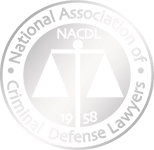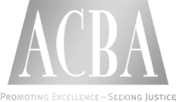Recent amendments to Title IX regulations have markedly altered its framework, generating significant discussion and concern. These modifications impact the procedures schools and universities implement when addressing allegations of sexual misconduct. The updated regulations have broad-reaching consequences, affecting not only the accused and their accusers but also how educational institutions manage these delicate matters. Title IX defense attorneys are particularly key in this new environment, championing the rights and welfare of their clients amidst these regulatory changes. This article explores the extended protections now afforded to the accused under the revised Title IX guidelines, highlighting the dynamic role of Title IX defense in adapting to these crucial regulatory developments.

Overview of the Revised Title IX Regulation
The recent overhaul of the Title IX regulation has introduced significant changes to the title ix process, particularly in how accused students are treated and the procedures that educational institutions must follow. These revisions mark a substantial shift from the previous version, reflecting a new approach to handling accusations of sexual misconduct within educational settings.
Key Changes in the Regulations:
- Due Process Enhancements: The revised regulation strengthens the due process rights for accused students. This includes the right to a live hearing, during which the accused and the accuser can present evidence and cross-examine witnesses through their advisors or attorneys.
- Standard of Evidence: Institutions now have the option to choose between the “preponderance of the evidence” standard and the “clear and convincing evidence” standard, offering more flexibility compared to the previous mandate of primarily using the “preponderance of the evidence” standard.
- Definition of Sexual Harassment: The new regulation adopts a narrower definition of sexual harassment, aligning more closely with the Supreme Court’s definition, which requires the harassment to be severe, pervasive, and objectively offensive.
- Jurisdictional Scope: The scope of cases that schools are required to investigate is more defined. Only incidents occurring within the school’s programs or activities and within the United States fall under the purview of Title IX investigations.
- Informal Resolution Options: Schools can now offer and facilitate informal resolution processes, such as mediation, if both parties agree, for resolving cases outside the formal hearing process.
Comparison with Previous Regulations:
- The previous version emphasized a broader definition of sexual harassment and predominantly used the “preponderance of the evidence” standard, which required less certainty for determining responsibility.
- Under the older guidelines, the title ix process did not mandate live hearings, and cross-examination was not a standard procedure, potentially impacting the due process rights of accused students.
- The earlier regulations had a wider jurisdictional reach, encompassing incidents that occurred off-campus or abroad if they had effects that extended into the school’s environment.
- Informal resolutions were less emphasized and, in some cases, discouraged under the previous framework, focusing more on formal adjudication processes.
These changes represent a significant realignment in Title IX, reshaping how educational institutions, accused students, and their advocates navigate the Title IX process. The revised regulations aim to balance the scales of justice in these sensitive cases, ensuring fairness and due process for all involved parties.

Expanded Rights for the Accused in the Title IX Process
The revised Title IX regulation introduces several key rights and protections for accused students, aiming to ensure a more balanced and fair process. These changes reflect a significant shift in the Title IX landscape, emphasizing the importance of due process and equitable treatment for all parties involved in these sensitive cases.
New Rights and Protections:
- Right to a Live Hearing: Accused students are now entitled to a live hearing, a fundamental shift from the previous guidelines. This allows for a more transparent and interactive process, where both parties can present evidence and arguments in a structured setting.
- Cross-Examination Rights: One of the most notable changes is the right to cross-examine witnesses and the accuser through an advisor or attorney. This inclusion strengthens the adversarial process, allowing for a more thorough examination of all evidence and statements.
- Choice of Standard of Evidence: Schools can now choose between two standards of evidence: the “preponderance of the evidence” and the “clear and convincing evidence” standard. This choice offers a more flexible approach, potentially benefiting accused students, especially in cases where the evidence is not unequivocal.
- Narrower Definition of Sexual Harassment: The revised regulations adopt a more stringent definition of sexual harassment, requiring it to be severe, pervasive, and objectively offensive. This change potentially reduces the number of incidents qualifying as Title IX violations, focusing on the most serious cases.
- Restricted Jurisdictional Scope: The jurisdiction of Title IX is now limited to incidents that occur within the school’s programs or activities and within the United States. This change confines the scope of Title IX cases, potentially reducing the number of situations in which accused students must defend themselves.
Legal Rationale Behind the Changes
The legal rationale for these revisions centers around strengthening due process protections for accused students. These changes are grounded in the principles of fairness and equity in the legal process, ensuring that accused students have adequate opportunities to defend themselves. The introduction of live hearings and cross-examination rights aligns the Title IX process more closely with traditional legal proceedings, thereby enhancing the credibility and thoroughness of the process.
The choice in the standard of evidence and the narrower definition of sexual harassment reflect a desire to balance the scales between protecting complainants and ensuring that accused students are not unjustly penalized. By offering more stringent criteria for what constitutes a Title IX violation and giving schools discretion in determining the burden of proof, the revised regulations aim to ensure that only substantiated cases lead to disciplinary action.
In conclusion, these changes to the Title IX process represent a significant shift towards reinforcing the rights and protections of accused students. The legal rationale behind these adjustments emphasizes a fairer, more balanced approach to handling accusations of sexual misconduct in educational settings, seeking to uphold the principles of justice and due process.

Implications for Educational Institutions Under Revised Title IX Regulation
The recent modifications to the Title IX regulation bring forth a new set of challenges and responsibilities for colleges and universities. These changes not only reshape how educational institutions handle accusations of sexual misconduct but also necessitate a reevaluation of their policies and procedures.
Impact on Colleges and Universities:
- Policy and Procedure Overhaul: Institutions must update their policies to align with the new Title IX regulation. This includes revising standards of evidence, implementing procedures for live hearings, and ensuring the provision for cross-examination.
- Training and Resources: Colleges and universities need to provide comprehensive training to staff and students about the new Title IX processes. This includes educating Title IX coordinators, investigators, and decision-makers, ensuring they understand and can effectively implement the revised standards.
- Legal and Compliance Challenges: The new regulation may lead to increased involvement of Title IX defense lawyers, as accused students now have expanded rights, including legal representation during proceedings. Institutions must be prepared to interact and cooperate with legal professionals in these contexts, ensuring that proceedings are conducted fairly and in compliance with the revised regulations.
- Legal Risks and Litigation: With the new regulation, there is an increased risk of litigation from both the accused and the accusers, particularly if either party feels their rights have not been appropriately upheld. This necessitates a careful, legally sound approach to Title IX cases.
- Balancing Fairness and Safety: One of the primary challenges will be to balance the rights of the accused with the need to maintain a safe and non-discriminatory environment for all students. Institutions must ensure that their response to accusations of sexual misconduct is both fair and rigorous, protecting the rights of all parties involved.
The revised Title IX regulation poses significant implications for educational institutions, requiring them to adapt their policies, procedures, and resource allocations. The involvement of Title IX defense lawyers and the emphasis on due process add layers of complexity to the handling of sexual misconduct cases. Colleges and universities must navigate these changes carefully, balancing legal compliance with the need to create a safe, equitable environment for all students.

Perspectives and Reactions to the Revised Title IX Regulation
The revised Title IX regulation has elicited a diverse range of perspectives and reactions, reflecting the complexity and sensitivity of issues related to sexual misconduct in educational settings. These responses can be broadly categorized into those supporting and those opposing the changes.
While the revised Title IX regulation undoubtedly strengthens the legal rights of the accused, ensuring a process that more closely mirrors the legal system, concerns about its potential impact on victims and campus culture cannot be ignored. The challenge lies in finding a middle ground where the rights of all parties are protected, and educational institutions can effectively address and prevent sexual misconduct. The ongoing debate reflects the nuanced nature of Title IX issues and the importance of continually assessing and refining approaches to handling sexual misconduct in educational settings.
The revised Title IX regulation represents a significant shift in the approach to handling sexual misconduct allegations within educational institutions. This article has outlined the key aspects of these changes, emphasizing their impact on accused students, the responsibilities and challenges faced by educational institutions, and the diverse perspectives and reactions from various stakeholders.
Ultimately, the effectiveness of these changes will be measured by how well they balance the rights of the accused with the protection and support for victims, and how effectively they contribute to creating safer and more equitable educational environments. It is a delicate balance, one that requires continuous evaluation and adjustment, to ensure that the principles of justice and equity are upheld in our educational institutions.











